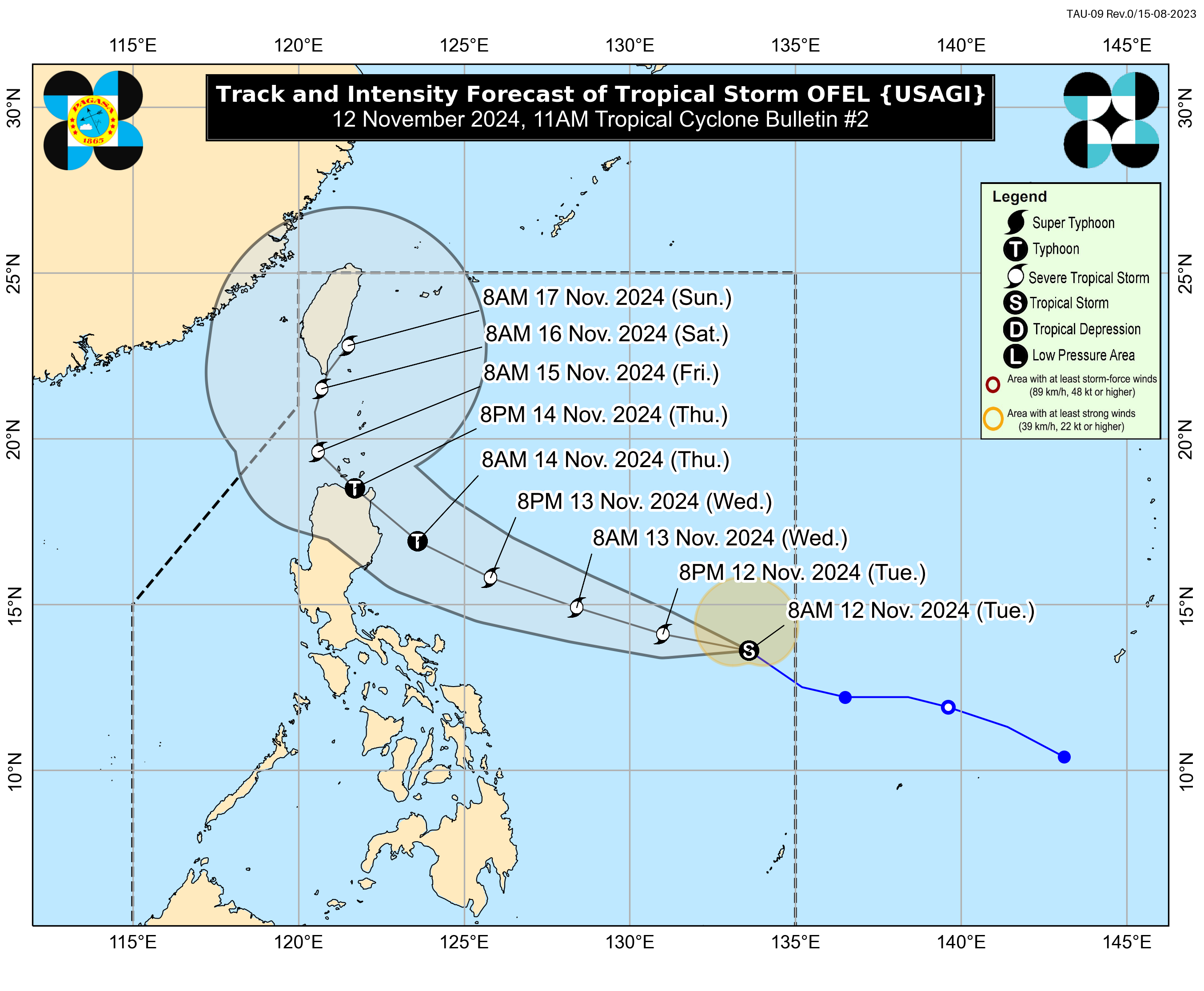
MANILA, Philippines — Tropical Storm Ofel (international name: Usagi) intensified as it moved over the Philippine Sea on Tuesday, according to the Philippine Atmospheric, Geophysical, and Astronomical Services Administration (Pagasa).
In its 11:00 a.m bulletin, Pagasa said Ofel was last spotted some 950 kilometers east of southeastern Luzon and is moving northwest at 35 kilometers per hour (kph).
It now packs maximum sustained winds of 85 kph near the center and a gustiness of up to 105 kph.
Pagasa weather specialist Veronica Torres explained that Ofel currently has no direct impact on any part of our country, but its trough or extension may bring rains to parts of Northern and Central Luzon as it approaches Philippine landmass.
“Inaasahan nga natin na tomorrow evening or Thursday early morning, posible na maging typhoon category itong si Ofel, at pinakamalakas na intensity nito ay bago ito mag-landfall,” Torres said in a morning briefing.
(We expect that Ofel may become a typhoon by tomorrow evening or early Thursday morning. Its peak intensity is likely before it makes landfall.)
Landfall forecast
According to Torres, Ofel is forecast to make landfall in Northern or Central Luzon on Thursday afternoon or evening.
“Ofel will bring strong to gale-force gusts over Catanduanes on Wednesday, while Tropical Cyclone Wind Signal No. 1 may be raised over portions of Cagayan Valley on Tuesday evening or early Wednesday morning,” Torres added in Filipino.
A heavy rainfall outlook was also issued by Pagasa ahead of Ofel’s landfall.
“By Thursday, asahan na nga natin yung heavy to intense rains, 100 to 200 millimeters (mm) na pag-ulan dito sa may Cagayan pati na rin sa may Isabela,” Torres said.
(By Thursday, we can expect heavy to intense rains, with rainfall amounts of 100 to 200 millimeters in areas including Cagayan and Isabela.)
Flood, landslide warnings
Rainfall alert
Meanwhile, moderate to heavy rains ranging from 50 to 100 mm may be experienced in Apayao, Kalinga, and Mountain Province on Thursday, according to Torres.
“Kapag may moderate to heavy rains tayo, localized flooding ay posible mainly in areas that are urbanized, low-lying, or near rivers at landslides ay posible sa mga highly susceptible areas,” Torres added.
(With moderate to heavy rains, localized flooding is possible, mainly in urbanized areas, low-lying regions, or near rivers, and landslides may occur in highly susceptible areas.)